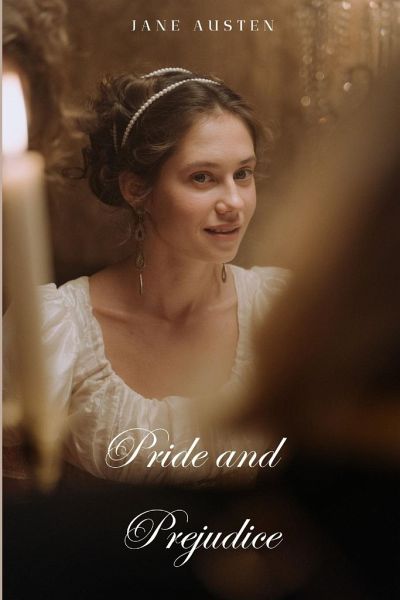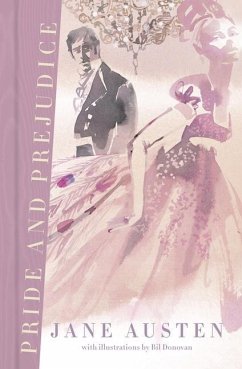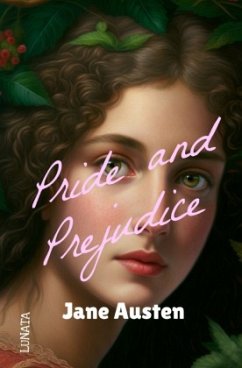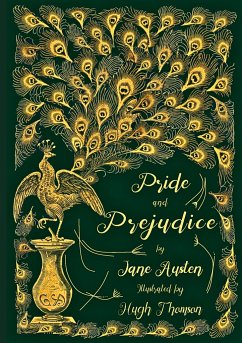
Pride and Prejudice (Annotated)
Versandkostenfrei!
Versandfertig in 1-2 Wochen
18,99 €
inkl. MwSt.

PAYBACK Punkte
9 °P sammeln!
Set against the backdrop of early 19th-century England, the novel opens with the Bennet family, a respectable yet financially modest clan residing in the rural town of Longbourn. The Bennets consist of the witty and sharp-minded Mr. Bennet, his good-natured but sometimes frivolous wife Mrs. Bennet, and their five daughters-Jane, Elizabeth, Mary, Kitty, and Lydia. The crux of the story unfolds with the arrival of the eligible and wealthy bachelor Mr. Charles Bingley to the nearby Netherfield Park. Mrs. Bennet is quick to seize the opportunity for a potential advantageous marriage, especially co...
Set against the backdrop of early 19th-century England, the novel opens with the Bennet family, a respectable yet financially modest clan residing in the rural town of Longbourn. The Bennets consist of the witty and sharp-minded Mr. Bennet, his good-natured but sometimes frivolous wife Mrs. Bennet, and their five daughters-Jane, Elizabeth, Mary, Kitty, and Lydia. The crux of the story unfolds with the arrival of the eligible and wealthy bachelor Mr. Charles Bingley to the nearby Netherfield Park. Mrs. Bennet is quick to seize the opportunity for a potential advantageous marriage, especially considering Bingley's amiable demeanor and his apparent interest in Jane, the eldest Bennet daughter. However, it is Mr. Bingley's enigmatic and proud friend, Mr. Fitzwilliam Darcy, who becomes the focus of both the societal gossip and the independent-minded Elizabeth Bennet's attention. Darcy's reserved nature and seemingly disdainful behavior initially repel Elizabeth, leading to a simmering tension between the two. As the novel progresses, the intricate dance of love, misunderstandings, and societal expectations unfolds. Jane and Mr. Bingley navigate the obstacles to their affection, while the complex relationship between Elizabeth and Darcy takes center stage. Darcy's gradual revelation of his true character, coupled with Elizabeth's growth in understanding, forms the crux of the novel's emotional depth. The narrative skillfully explores the themes of pride and prejudice, not only in the central love story but also in the secondary characters and their interactions. The reader witnesses the consequences of hasty judgments and the transformative power of self-awareness and humility. The novel is also a vivid panorama of the social fabric of the time, portraying the intricacies of class distinctions, the challenges faced by women in a marriage-oriented society, and the societal expectations that govern every interaction. Through the lens of the Bennet family and their acquaintances, Austen paints a rich and nuanced portrait of a society where marriage is not only a matter of the heart but a strategic maneuver for financial stability and social status. The climax of the story unfolds in a series of events that bring forth revelations, confrontations, and, ultimately, resolution. Austen masterfully ties together the various plot threads, weaving a satisfying tapestry of love, growth, and societal commentary. In the end, Pride and Prejudice stands as a timeless exploration of human nature and the complexities of relationships. Jane Austen's keen observations, sparkling wit, and insightful social commentary make this novel not only a delightful romance but also a profound exploration of the human condition, ensuring its enduring appeal for readers across generations.













